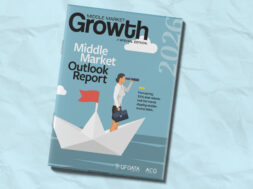Managing the Overlap of Human and Financial Capital
Accounting for human capital when structuring a personal portfolio requires understanding how it overlaps with the investable assets accumulated through personal savings.

Understanding the big picture is crucial when making any decision, and it becomes even more important when deciding on the proper asset allocation for an individual portfolio. Many retail investors believe that long-term returns depend heavily on selecting the right securities or timing the market, but in fact 90 percent of a portfolio’s return is attributed to the overall mix of cash, bonds and stocks.
A portfolio’s output is reliant on several different inputs, and striking the right balance is of significant importance. One of the biggest inputs is the economic value of an employee’s skills, known as human capital. Properly accounting for human capital when structuring a portfolio requires understanding how it overlaps with financial capital, the investable assets accumulated through personal savings.
Human capital is generally the most important and largest line item on an individual’s balance sheet. The ability to earn and save over time creates a bond-like stream of income. But what happens when that income is highly correlated to one’s financial capital? The earnings potential of those working in the financial industry—at a private equity or investment banking firm, for example—is directly tied to the performance of the economy, markets and portfolio investments. When markets and financial capital perform well, financial firms tend to increase compensation, growing human capital. But when markets and financial investments perform poorly, financial firms tend to tighten compensation or even lay off employees, reducing or destroying human capital.
For this reason, it’s even more important for a financial professional, as opposed to employees in other industries, to understand the big picture and allocate risk appropriately. Below are strategies to balance financial risk in the context of the overlapping human and financial capital of financial professionals.
One of the biggest inputs is the economic value of an employee’s skills, known as human capital.
Increase Cash Reserves. Increasing the “rainy day” cash fund to balance the pronounced human capital risk is the simplest strategy. The rule of thumb is generally for cash reserves to amount to three to nine months’ worth of spending. This cash reserve can be utilized for unexpected expenses or as a bridge between employment. However, financial professionals should consider increasing reserves beyond the three to nine months’ amount to provide ample security in the event of a market slowdown. Not only can it help with the items listed above, it can also decrease total risk and provide a cushion for reduced or no income.
Modify Asset Allocation. Fixed income is generally held in a portfolio to protect against volatility and provide income. Increasing a fixed income allocation can help financial professionals reduce their overall exposure to market stress and the correlation of their financial and human capital.
Another risk that exists for financial professionals’ human capital is concentration within a certain industry. Many firms and roles become specialized and add idiosyncratic risk. This should be accounted for in the allocation, and exposures should be altered accordingly. For example, if one’s professional role is largely focused in the energy or health care space, consider reducing those industry exposures in the portfolio.
Shift Allocation Over Time. Younger investors’ human capital makes up a greater percentage of their total net worth. Human capital can be thought of as a bond-like stream of income. Therefore, as income is earned, the discounted value of human capital is reduced. This reduction in bond-like income can be offset through a strategic increase in fixed income. This disciplined approach can help balance risk over the long term.
Determining strategic asset allocation is a deep and thoughtful exercise. It should start at a high level, including a full analysis of the balance sheet and future goals. Human capital, the most important line item, is often overlooked, but it can make a significant difference for the risk profile of financial professionals. Creating a strategic plan to account for the overlap of human and financial capital should be top of mind for all financial professionals.

Matthew Kocanda is the head of BDF’s financial professionals practice group. In this capacity, he partners with clients working in private equity, investment banking and asset management on their personal wealth management to enable them to focus on their professional investing. To learn more, contact Matt at Mkocanda@bdfllc.com.
BDF Disclosure: Past performance may not be indicative of future results. Different types of investments involve varying degrees of risk. Future performance of any investment or wealth management strategy, including those recommended by Balasa Dinverno Foltz LLC (BDF), may not be profitable, suitable for you, prove successful or equal historical indices. Historical indices do not reflect the deduction of transaction, custodial or investment management fees, which would diminish results. Any historical index performance figures are for comparison purposes only and client account holdings will not directly correspond to any such data. BDF’s current written disclosure statement discussing advisory services and fees is available for review at BDFLLC.com or upon request. BDF does not provide legal, tax, insurance, social security or accounting advice. Clients of BDF should obtain their own independent tax, insurance, and legal advice based on their particular circumstances. The information herein is provided solely to educate on a variety of topics, including wealth planning, tax considerations, insurance, estate, gift and philanthropic planning.


